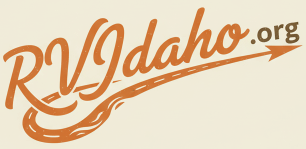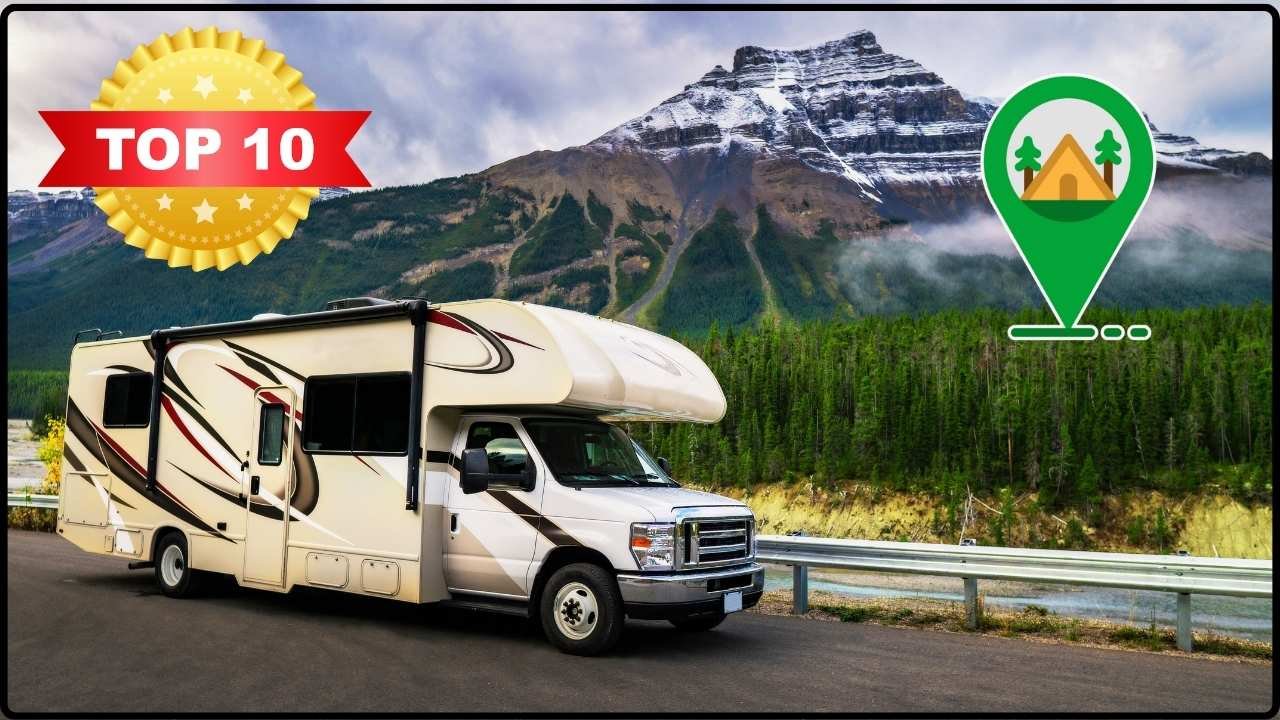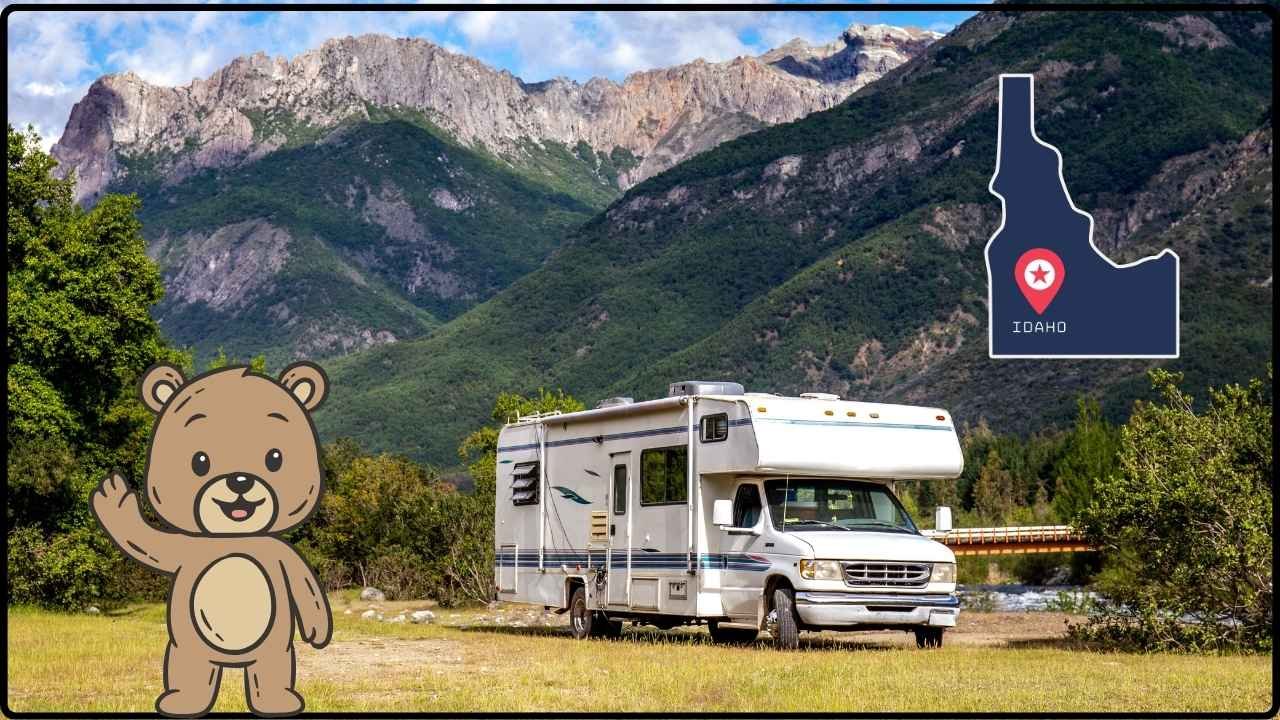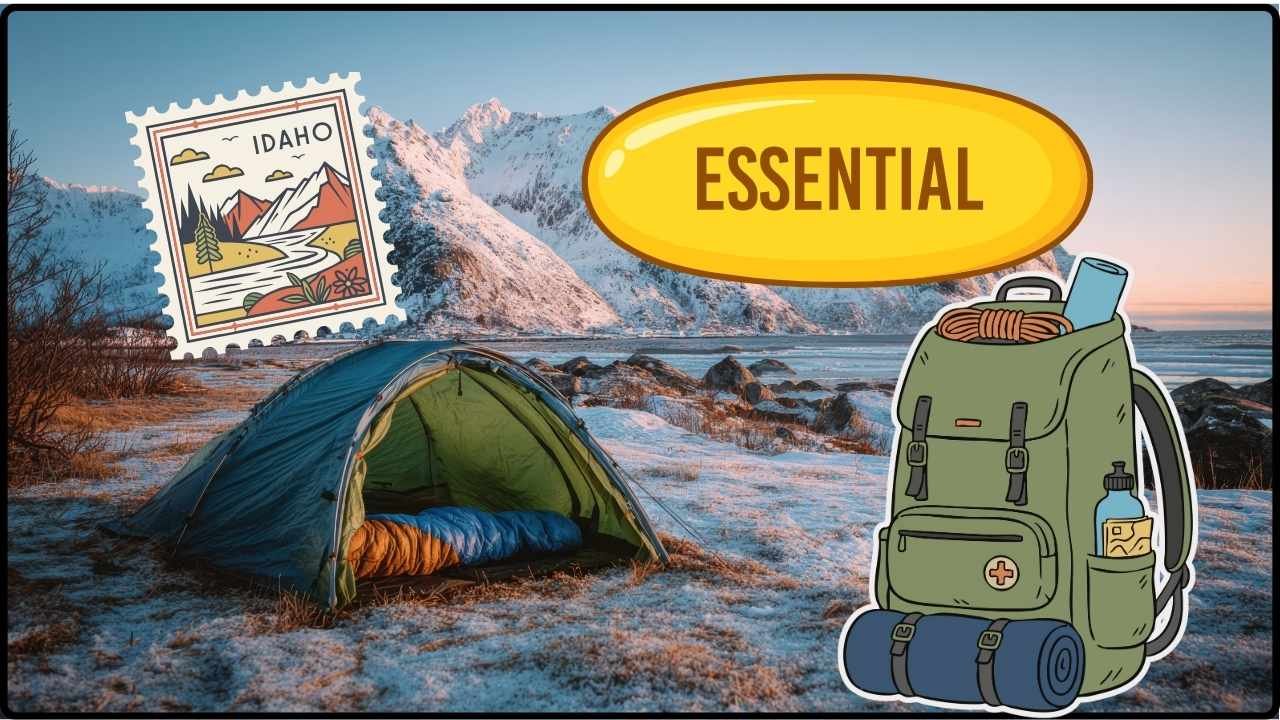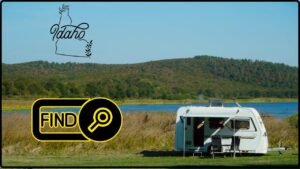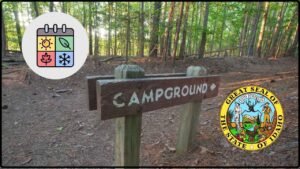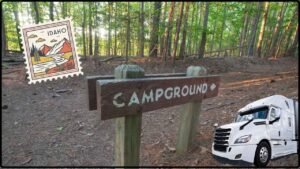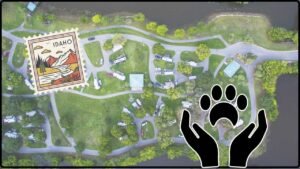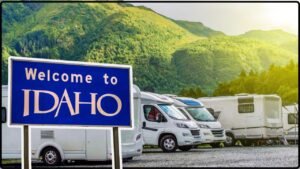
Idaho Boondocking Gear: Boondocking in Idaho’s breathtaking mountains is a wild and freeing way to experience the outdoors—no hookups, no crowds, just pure nature. But camping off-grid in remote mountain terrain means being prepared. Your Idaho boondocking gear matters for staying safe, warm, and comfortable while respecting the environment. This comprehensive guide dives deep into the top 5 essential gear items you need to rock your mountain camping trip off-grid. Along with detailed advice on weather, safety, Leave No Trace principles, and local regulations, this article will equip novices and vets alike to camp smart and responsible in Idaho’s wild backcountry.
Idaho Boondocking Gear
Boondocking in Idaho’s mountains offers a unique way to disconnect and immerse yourself in wild, beautiful landscapes. Success depends on packing the right gear—durable shelter, warm sleeping system, clean water, cooking tools, and safety supplies—along with being prepared for diverse weather, valuable knowledge of camping laws, and a commitment to Leave No Trace. Respect the land, stay weather-wise, and camp responsibly. The wild Idaho mountains are waiting—are you ready to answer the call?
| Topic | Details |
|---|---|
| Popularity of Boondocking | Boondocking made up 16% of all U.S. camping nights in 2022, growing from 7% in 2021 |
| Top Idaho Boondocking Areas | Sawtooth, Frank Church-River of No Return, Selway-Bitterroot, Salmon-Challis, Hell’s Canyon |
| Essential Gear | Tent, sleeping system, water filtration, cooking supplies, lighting & safety |
| Weather & Safety Tips | Highs around 80°F in summer, mountain nights below 40°F, layered clothing, campfire caution |
| Legal Boondocking Limits | Max 14 days camping per 30-day period; camp >1 mile from developed sites; group size and vehicle limits |
| Leave No Trace Principles | Plan ahead, stick to durable surfaces, pack out trash, respect wildlife |
What Exactly is Boondocking?
Boondocking means camping off the grid—no hookups for electricity, water, or sewer. It’s about pitching a tent or parking an RV in a wild, undeveloped area, usually on public lands managed by the Bureau of Land Management (BLM) or U.S. Forest Service. Idaho is a prime spot with vast mountainous wilderness, thanks to its millions of acres of public land.
Unlike crowded campgrounds, boondocking requires full self-sufficiency: you bring all your gear, water, food, and supplies, and you leave no trace that you were there. It’s a chance to unplug, challenge yourself, and really connect with nature. But it also means preparation is key to handling rugged conditions, isolation, and unpredictable weather.
Why Idaho?
Idaho’s mountain country offers some of the best backcountry experiences in the U.S. Its rugged wilderness areas are perfect for boondockers who want epic scenery, wildlife encounters, and a true escape.
- Sawtooth National Forest: Known for alpine lakes, towering peaks, and 2.1 million acres of wilderness.
- Frank Church-River of No Return Wilderness: This vast area ranks among the largest untouched wilderness in the U.S., with steep canyons and diverse habitats.
- Selway-Bitterroot Wilderness: Famous for dense forests, pristine rivers, and abundant wildlife.
- Salmon-Challis National Forest: Features mountains, hot springs, and miles of solitude.
- Hell’s Canyon: The deepest river gorge in North America offers spectacular vistas and challenging terrain.
- Owyhee Canyonlands: Desert canyons and wide-open spaces for serious remote camping.
Each area allows boondocking with varying access points, but all demand respect for nature and preparedness for self-reliant camping in sometimes extreme conditions.

The 5 Essentials for Idaho Boondocking Gear
1. A Sturdy Tent and Shelter
Your tent is your home base—choose a model rated for rain, wind, and possibly snow. Opt for a tent with a full rainfly, tough poles, and good ventilation. A sturdy footprint protects your tent floor from sharp rocks and moisture.
Bring extra stakes and guy lines for rocky or uneven ground common in mountainous zones. Tarps are flexible gear for creating shaded cooking or relaxing spaces or emergency covers against unexpected weather. Setting up shelter securely keeps you dry and adjusts to changing mountain weather.
2. A Sleeping System That Keeps You Warm
Mountain nights can quickly dip below freezing, even in summer. A high-quality sleeping bag rated for temperatures near or below 20°F is ideal. Synthetic bags perform better if damp, while down bags pack small and warm when dry.
An insulated sleeping pad is critical to buffer cold ground and provide comfort. Consider extra blankets or liners for added warmth. Adding a small pillow or a sack filled with clothes increases comfort for better rest after long days trekking or driving. Good sleep helps you perform and enjoy the day ahead.
3. Water Storage and Purification Tools
Water availability is a make-or-break on extended trips. Bring large containers for storage plus smaller bottles for day hikes.
Idaho’s streams and lakes may appear clear but often carry harmful bacteria or parasites. Portable water filters (like ceramic or pump filters), UV purifiers, or chemical treatments (like iodine or chlorine tablets) ensure drinking water is safe and reduce illness risk.
Collapsible containers help save pack space when empty, and always refill before heading into isolated areas. Staying hydrated keeps you energized and reduces altitude sickness in higher elevation.
4. Portable Cooking Gear and Fuel
Good food and hot drinks are morale-boosters. Fuel-efficient camp stoves or backpacking stoves provide reliable cooking without the uncertainties of open fires, especially in fire-restricted seasons.
Bring compact cookware—pots, pans, coffee mugs—and utensils with long handles for easy, safe cooking. Fire starters, lighters, waterproof matches, and backup fuel can’t be forgotten.
Choose energy-dense, low-prep foods like jerky, nuts, dried fruit, freeze-dried meals, and instant coffee that withstand temperature swings and rough handling. A portable cooler or bear-proof container may be needed for perishables depending on your trip.
5. Lighting, Safety, and First Aid
Night falls fast and hard without city lights. Headlamps free your hands for cooking or reading after dark. Bring spare batteries or rechargeable power sources.
Idaho wilderness is bear country; carry bear spray as your frontline defense and know how to use it. A well-stocked first aid kit with bandages, antiseptic, allergy meds, painkillers, and any prescription drugs is essential.
Include sunscreen to protect against UV rays even on cloudy days, bug spray to fend off mosquitoes and ticks, and layered clothing for sudden cold or rain.
A multi-tool knife handles gear repairs or food prep. A whistle or signal mirror can help in emergencies. Always tell a trusted person your plans and expected return.
Weather and Safety in Idaho Mountains
Mountain weather is famously unpredictable. Idaho summers may reach 80°F by day but drop to freezing or near-freezing at night. Sudden storms, high winds, or even snow in shoulder seasons aren’t unusual.
Dressing in layers helps you adapt easily—start with moisture-wicking baselayers, add fleece or down insulation, and top with a waterproof/windproof shell. Protect extremities with hat and gloves.
Check forecasts before heading out and carry extra warm gear. Know the signs of hypothermia and altitude sickness, and be ready to seek shelter quickly in bad weather.
Campfire safety is vital—use established fire rings or portable stoves. Clear combustible material 10 feet around your fire, keep water ready, never leave fires unattended, and follow fire bans or restrictions carefully.
Stay aware of wildlife: keep food sealed, cook and store at a distance from your tent, and never feed animals. Following safety tips keeps you and the ecosystem secure.
Idaho Boondocking Regulations & Best Practices
Idaho public lands are managed by entities like BLM and US Forest Service, which encourage dispersed camping but regulate to protect natural resources.
- Duration: Camping is limited to 14 days within any 30-day period on public lands to prevent overuse.
- Distance Restrictions: Must camp at least 1 mile away from developed campgrounds, parking areas, trailheads, or other developed recreation sites.
- Group and Vehicle Limits: Typically, no more than 8 people or 2 vehicles per campsite are allowed to minimize impact.
- Firewood: Collect only dead and downed wood; cutting live trees is prohibited except under specific permits.
- Waste: Pack out all trash. Bury human waste 6-8 inches deep at least 200 feet from water sources.
- No Personal Property Left Unattended: Do not leave gear or vehicles for extended periods exceeding local limits.
Recently, Idaho passed Senate Bill 1141 addressing public camping bans in urban areas with populations over 100,000 (e.g., Boise), but this law exempts designated recreational areas, so backcountry boondocking remains legal and encouraged when conducted responsibly.

Leave No Trace: Preserve Idaho’s Wildlands
Boondocking means you’re a guest in a delicate environment. The Leave No Trace Seven Principles help minimize your footprint:
- Plan Ahead & Prepare: Learn rules, pack proper gear, and anticipate emergencies.
- Travel & Camp on Durable Surfaces: Use existing sites, stay on trails, avoid damaging vegetation.
- Dispose of Waste Properly: Carry out trash, bury human waste correctly to avoid pollution.
- Leave What You Find: Don’t disturb plants, rocks, or cultural sites.
- Minimize Campfire Impact: Use stoves or approved fire rings, avoid large fires.
- Respect Wildlife: Observe from distance, don’t feed animals, secure food.
- Be Considerate of Others: Keep noise down and share space respectfully.
Following these principles protects the ecosystem for you and generations to come.
Practical Tips for Idaho Boondocking
- Check In Locally: Before heading out, get advice and regulations from ranger stations or official websites.
- Pack Efficiently: Balance carrying enough gear with staying light.
- Emergency Ready: Carry maps, compass, GPS, and inform a contact of your itinerary.
- Food Security: Use bear canisters or seal containers tightly.
- Camp Site Choice: Select areas away from water or trails to minimize impact.
- Quiet Hours: Respect nature’s peace and other campers by keeping noise low.
Essential Gear for Boondocking in Idaho’s Backcountry
7 Amazing Free Campsites in Idaho’s Panhandle (Smith Lake, Pend Oreille, and More)
A Guide to Idaho’s State Park Campgrounds: Amenities, Fees, and Reservations
